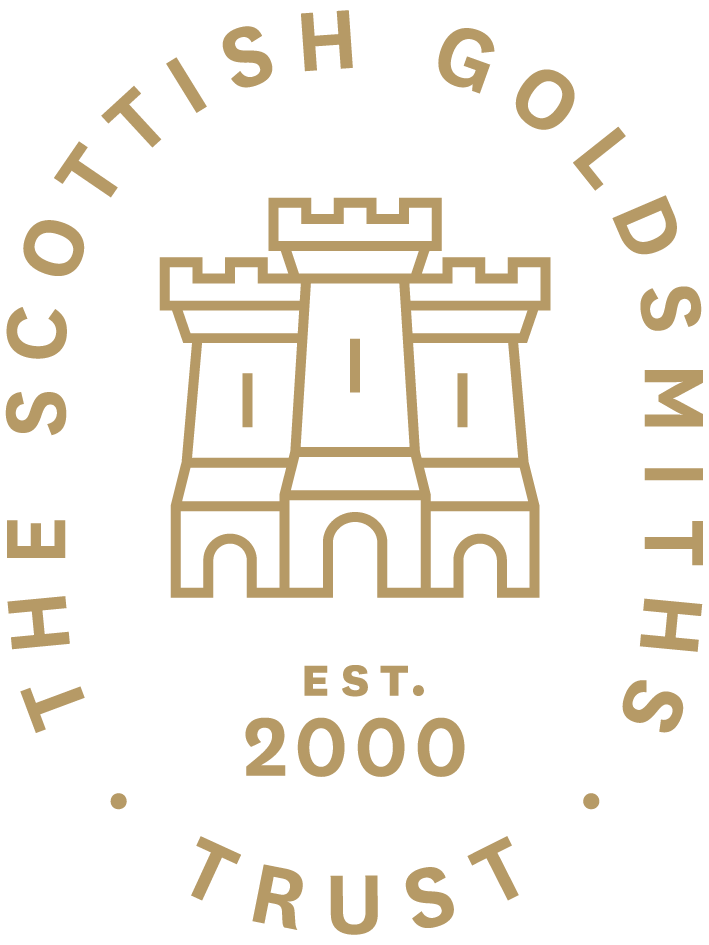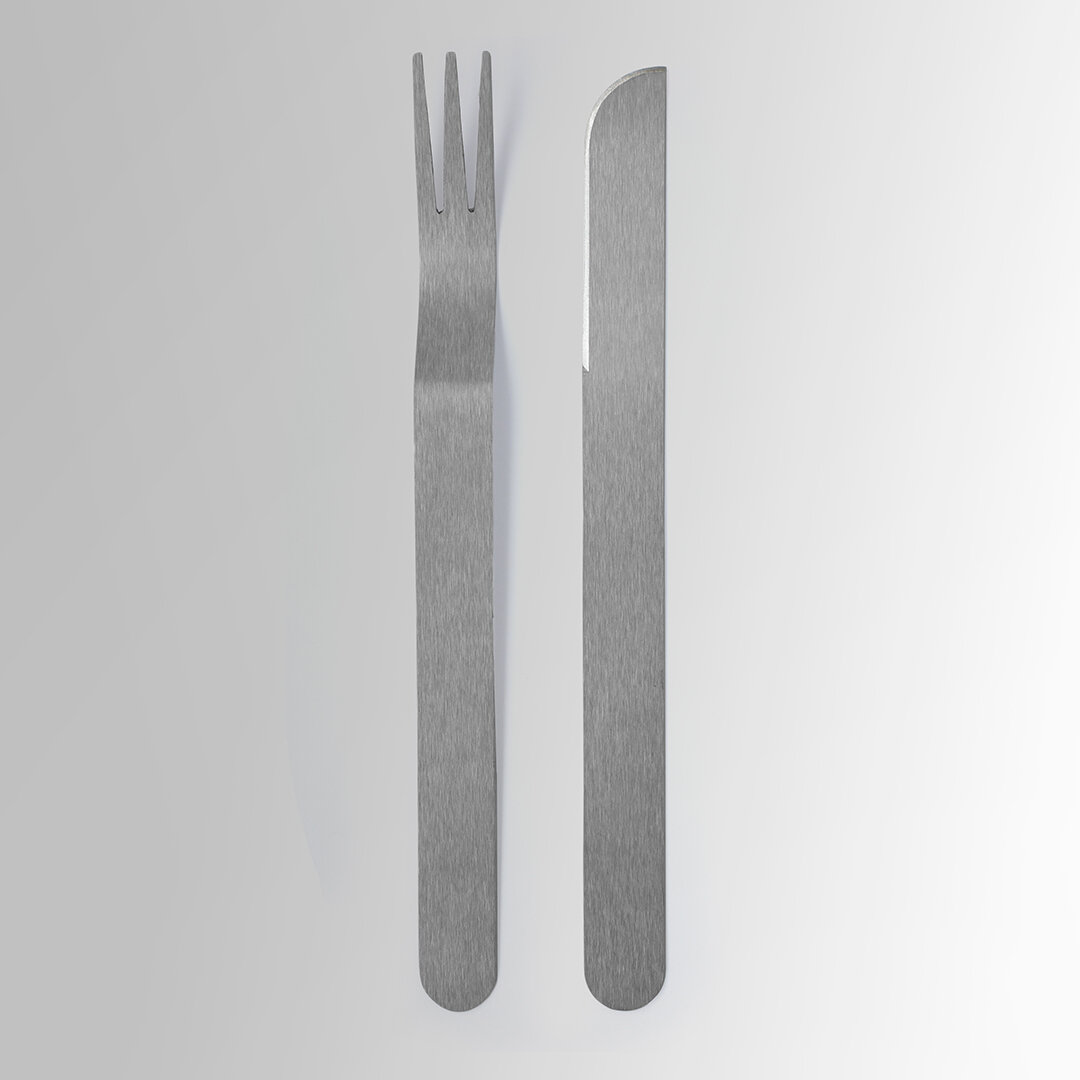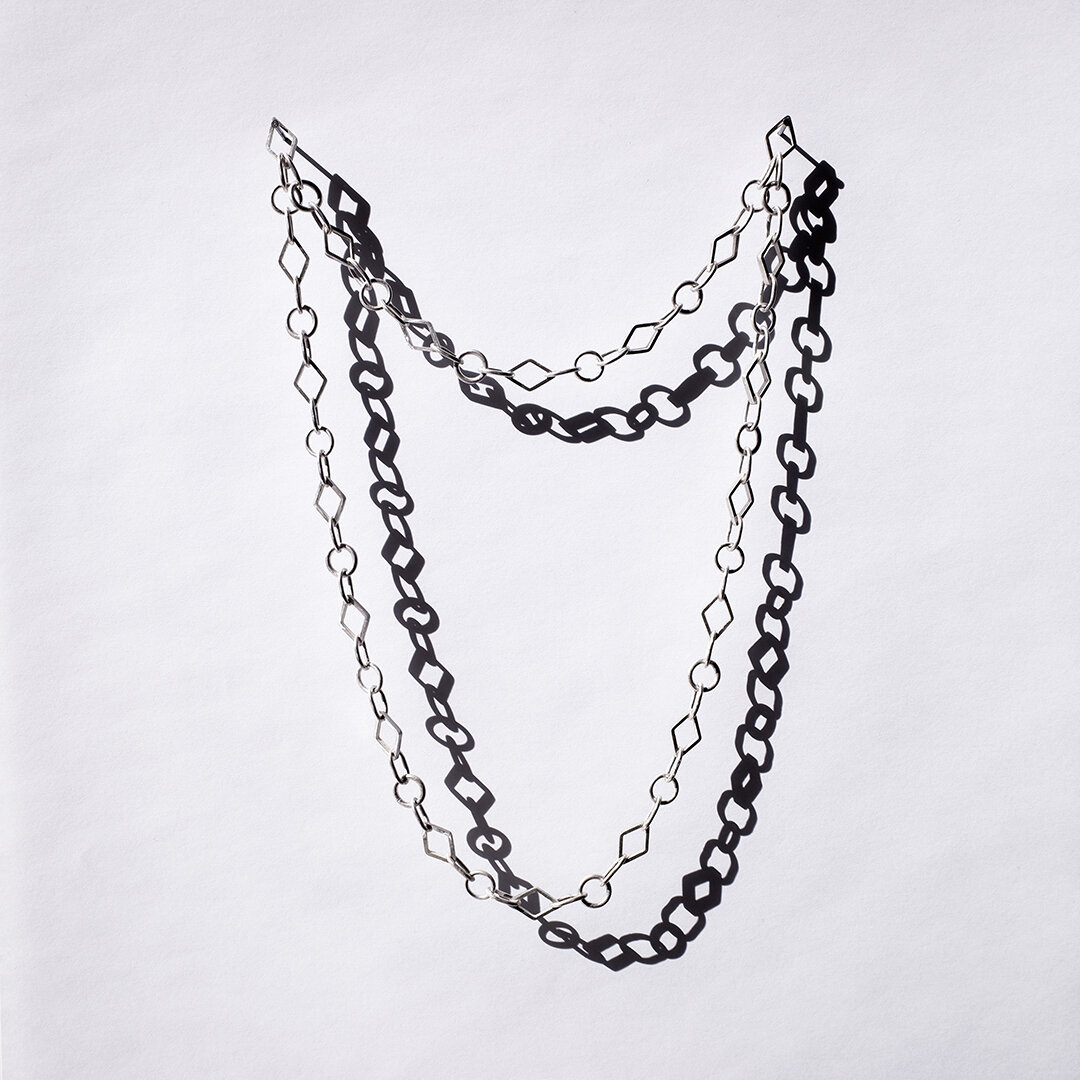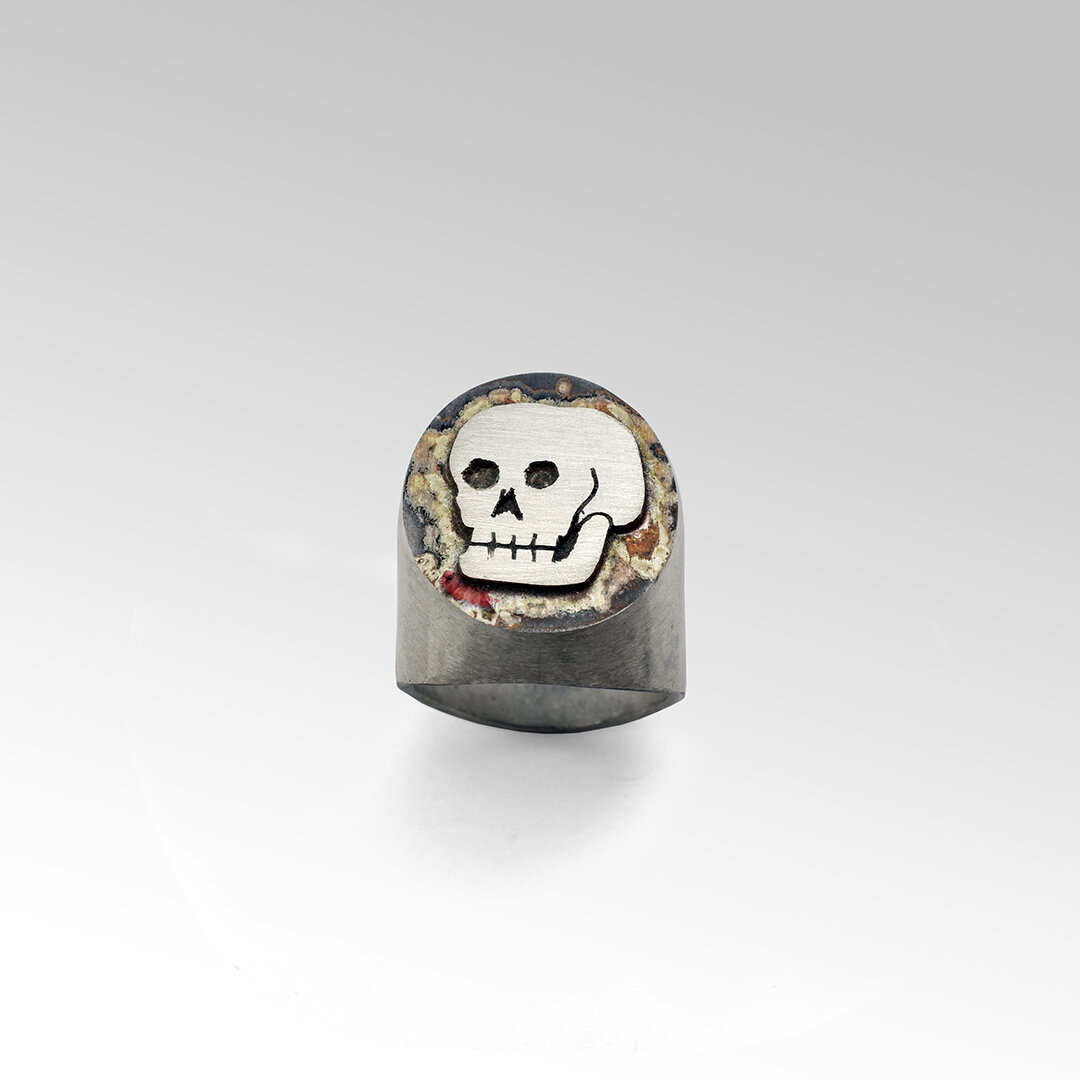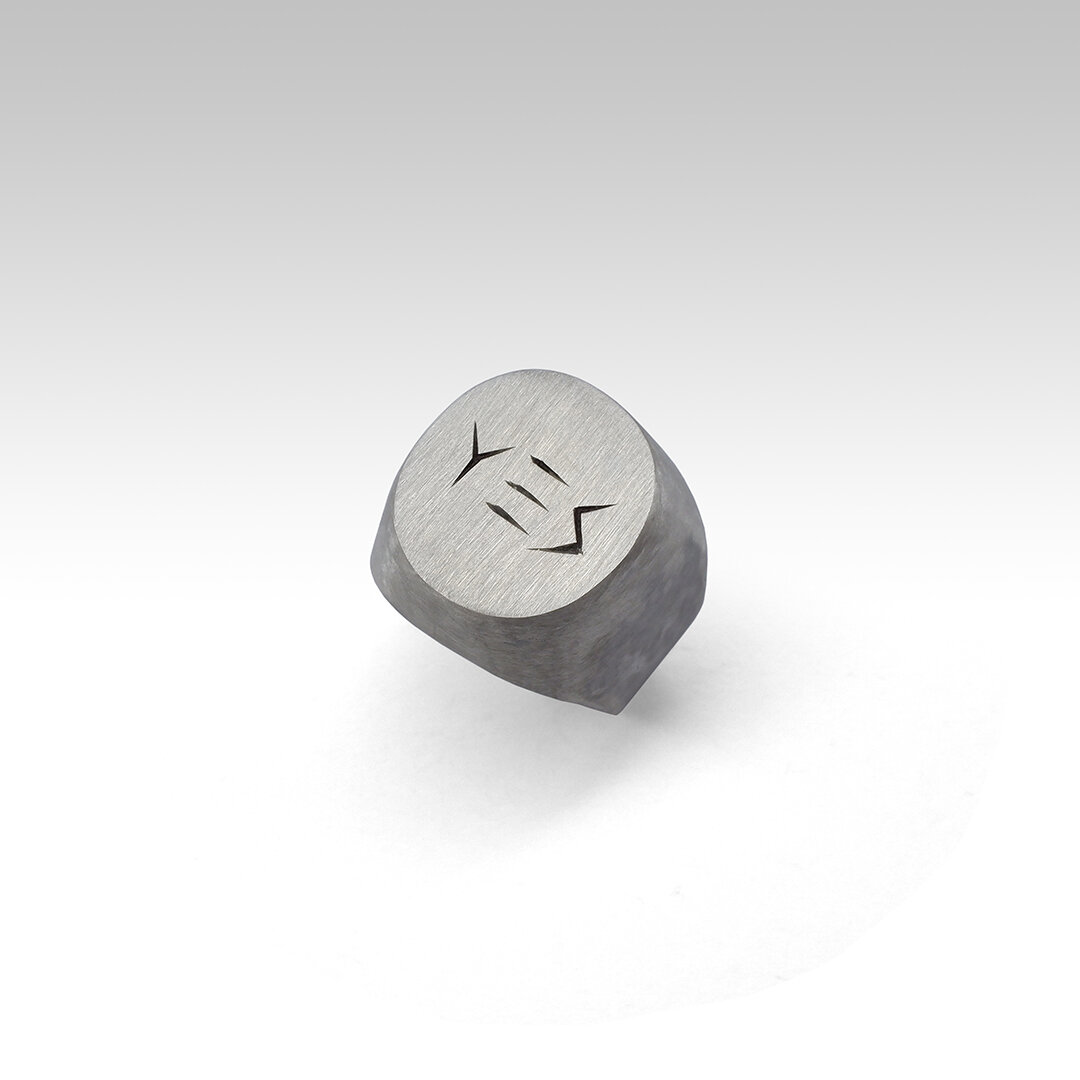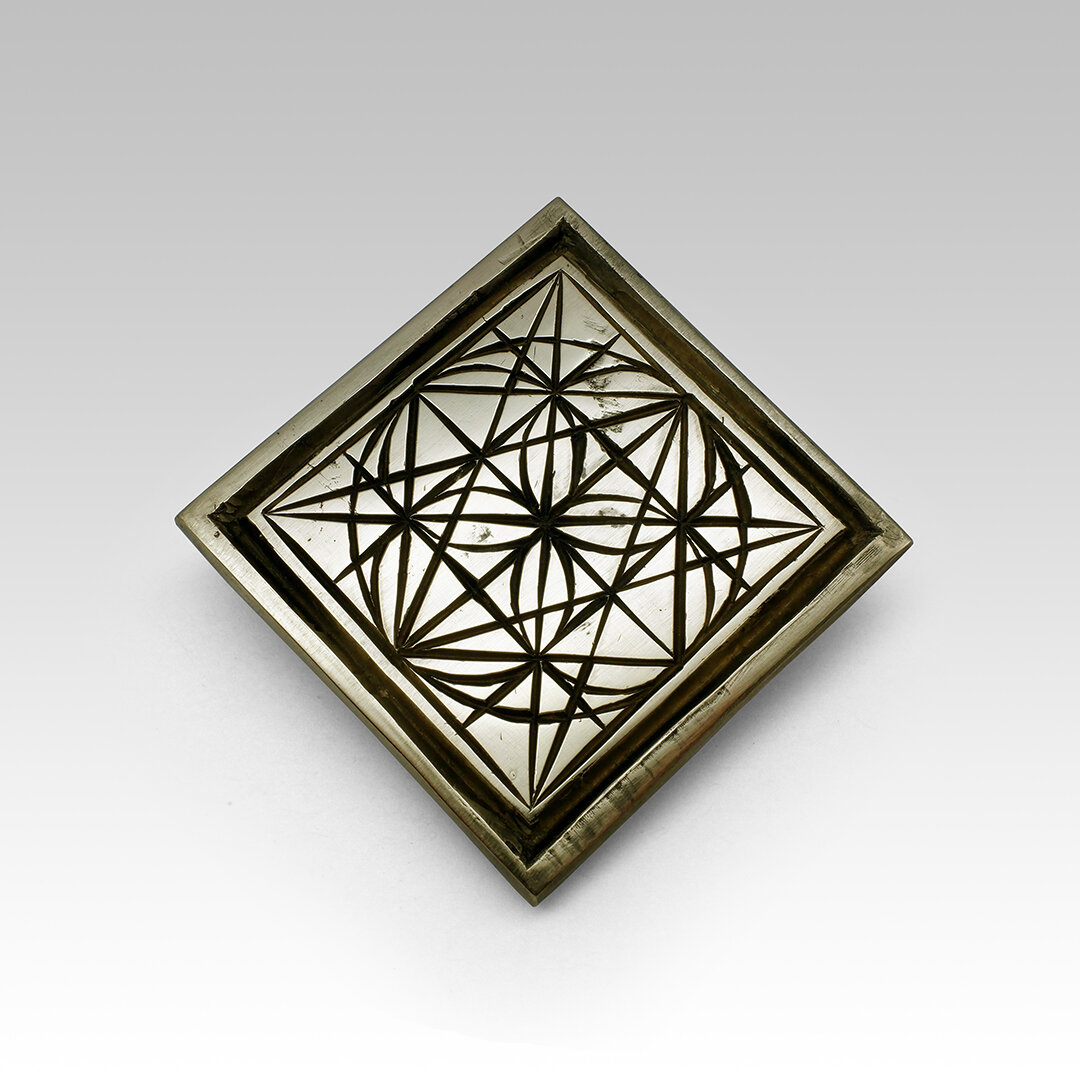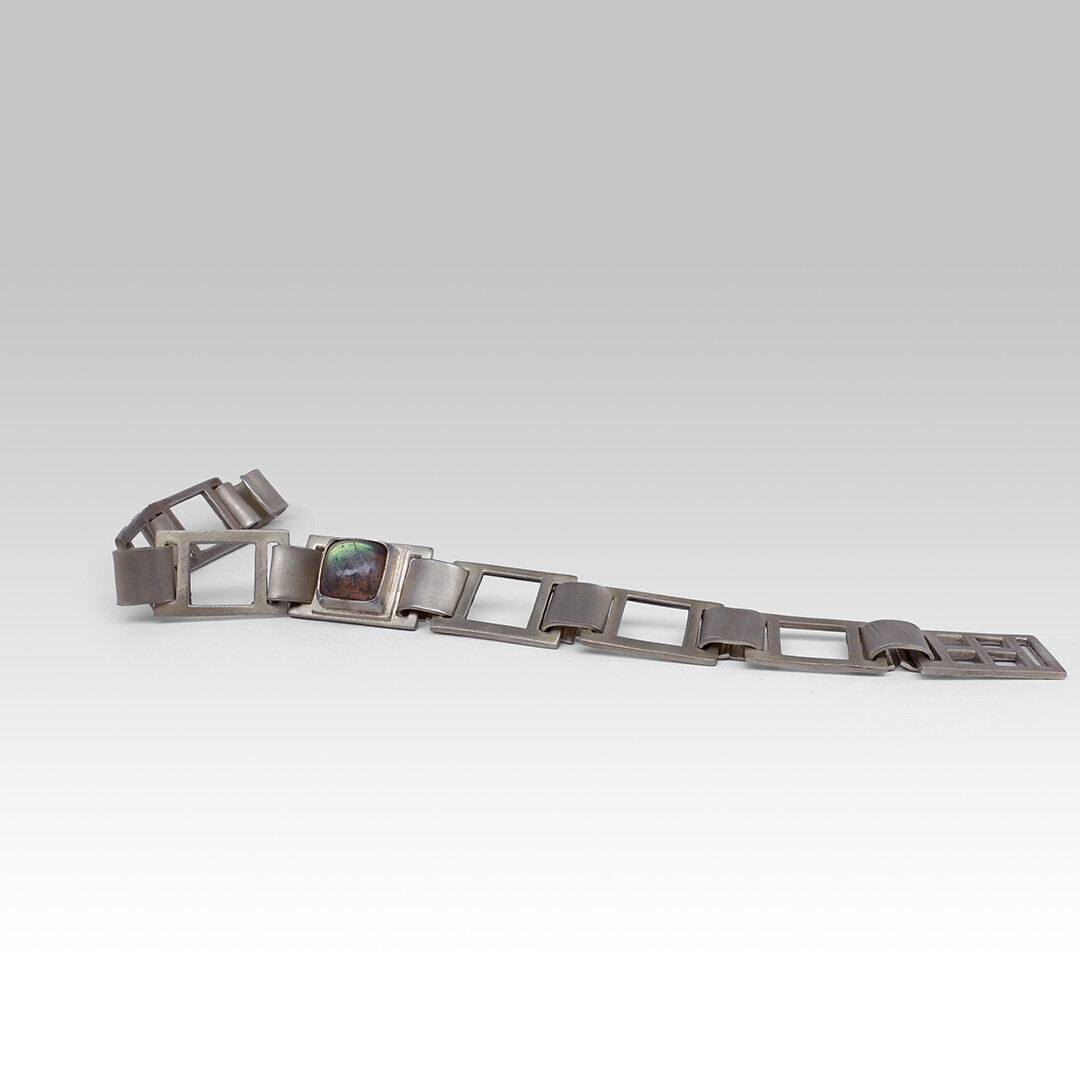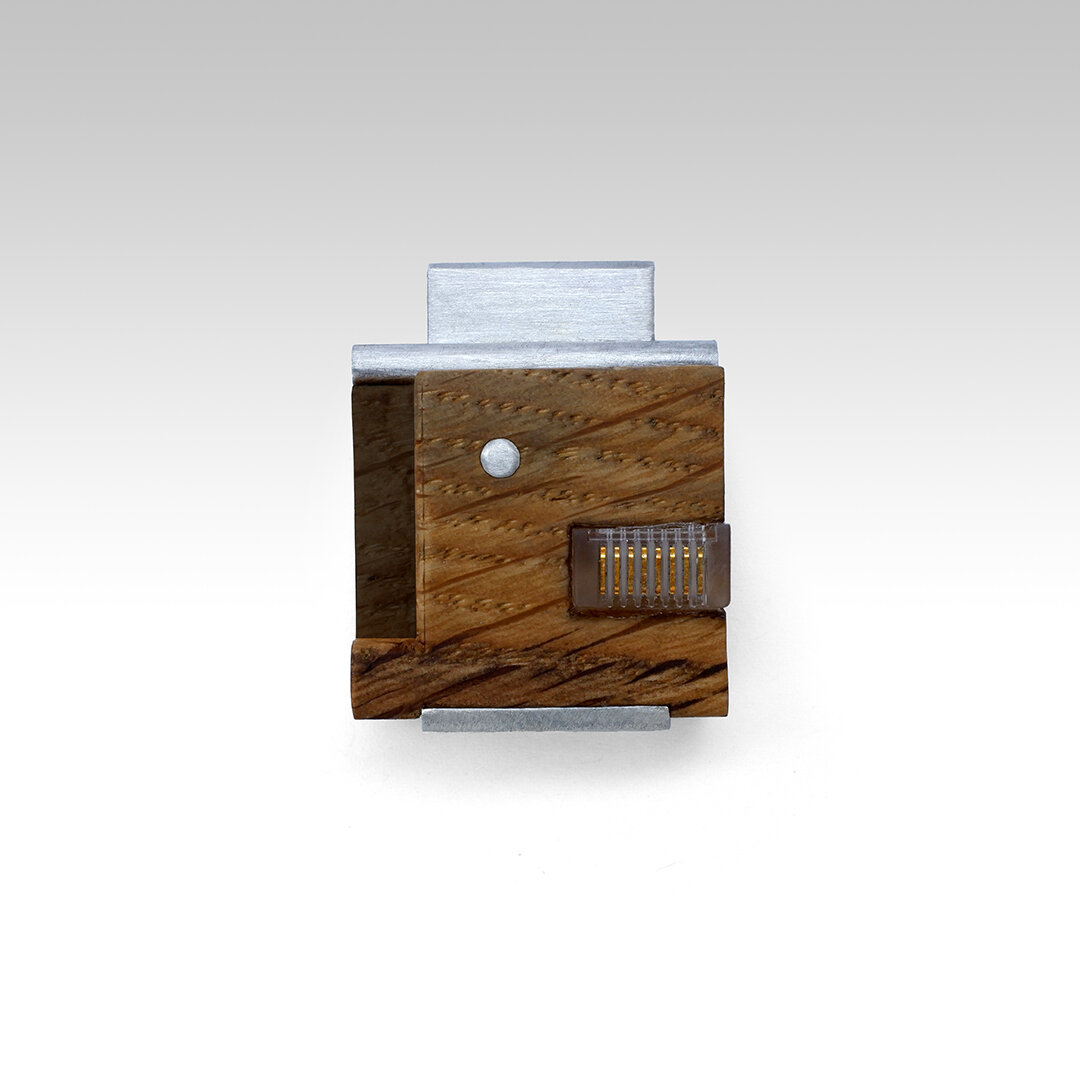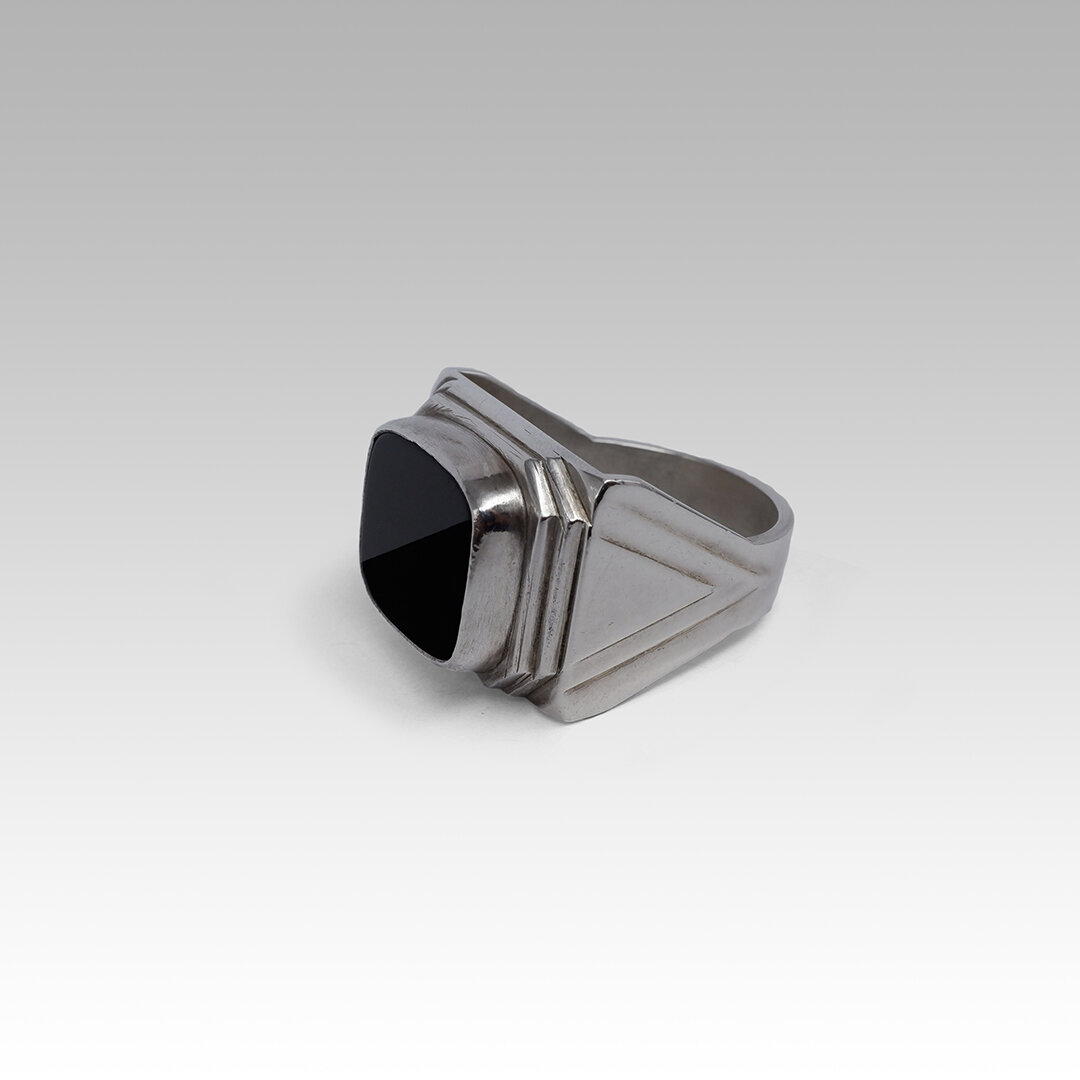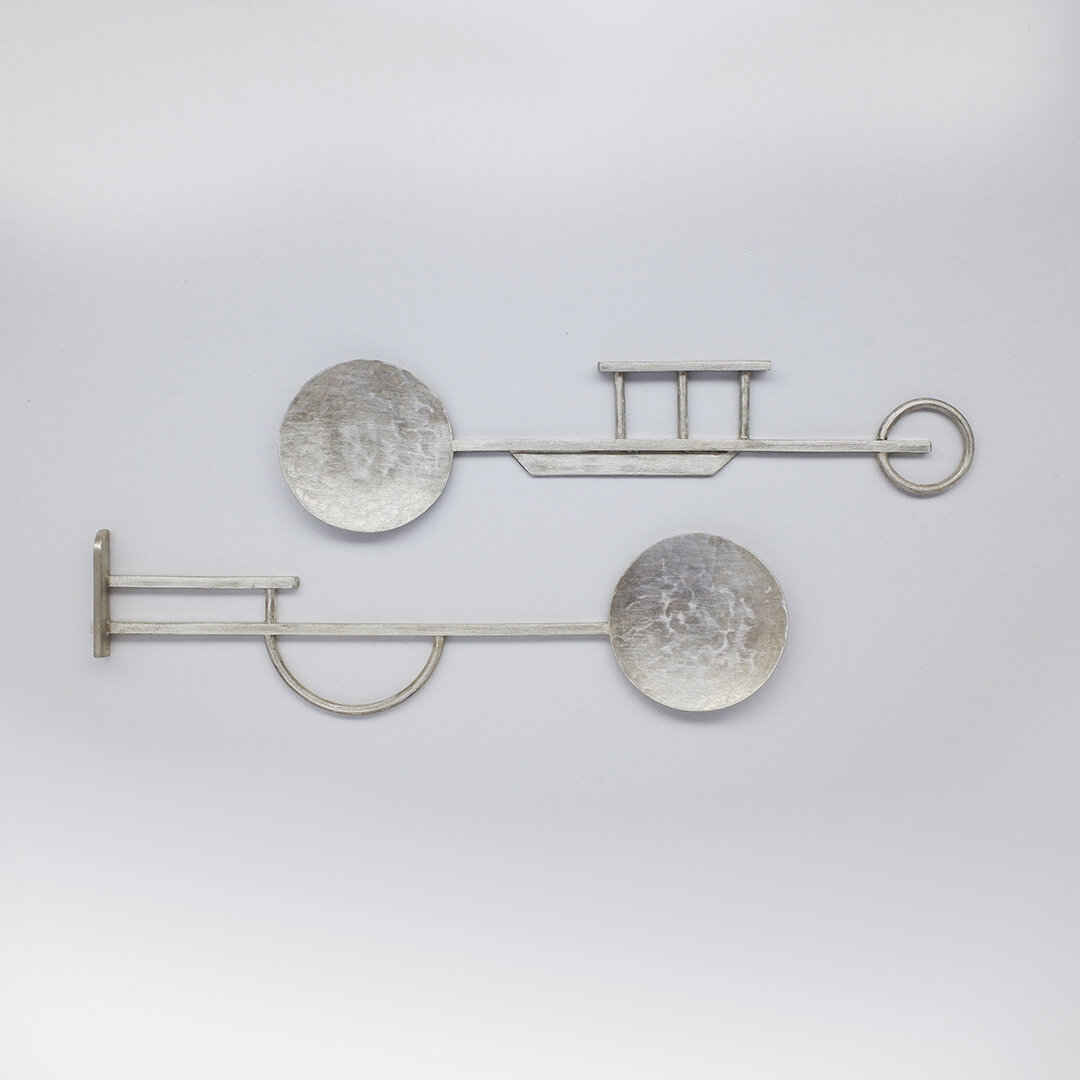Spotlight On: Nicholas Harrington
Spotlight on: Nicholas Harrington
Nicholas Harrington is an artist and jewellery designer based in Glasgow. Proportion, balance and simplicity are recurring themes in Nicholas’ work. Trips to Japan have made a lasting impression, and the sophisticated design and exquisite craftsmanship to be found there is a continual inspiration. He is particularly interested in how this same influence shaped what we call the ‘Glasgow Style’ of Mackintosh et al, as well as countless other international avant-garde movements. An interest in Zen Buddhism has taught him to appreciate the ‘empty’ space between things, or what is unsaid as much as what is said. Nicholas’ work was featured in our 2020 Graduate Exhibition at Elements. We caught up with Nicholas to learn more about his work and career over the past year.
Nicholas thinks of jewellery as a process of rearranging materials which have been in the earth for millions of years and will be here long after us.
Image by Mara Chavez
How did you become interested in jewellery?
A few years ago I bought a ring at an Mdou Moctar concert. I admire his guitar playing and his style, and at the merch stand after the show he was very polite and friendly. Later I regretted not asking him if he knew the jeweller or could tell me more about the ring. Instead I continued a long and shameful tradition of undervaluing an anonymous craftsperson from a faraway country. I wore the ring for a year or so, then thought I’d try to make my own. I took a course at City of Glasgow College, where I had a great time and learned a lot. And I was moved almost to tears when I was given a free toolbox and some silver to get started with. I told my dad this and he said he thought Thatcher stopped that sort of behaviour decades ago but was delighted to hear it still existed in some remote parts. Also, by a sad and perhaps divine coincidence this was exactly the time Baird’s on Mitchell Street was closing. Out of curiosity I had gone to have a look and was amazed that a place still existed where an old Glaswegian wearing a suit welcomed you at the front door, with newspapers and humbugs in the lift. The shopkeeper, Anna, kindly chatted to me for hours and told me what all the different tools were for, as I barely had a clue. She said it was her last shift and that the shop was closing tomorrow and all stock was being cleared. I felt strangely emotional about this place I had never been to before and this woman I had only just met. She filled a cardboard box full of tools and gave me a considerable discount, and I carried them home and decided I had better figure out how to use all these things.
Knife and Fork, made of stainless steel.
Blue and Red Brooch, made of wood, silver, acrylic and steel pin.
Necklace, made of silver.
Why did you decided to follow this career path?
‘Career’ is not a word I think about much. There are far more important things to consider – peace, contentment, happiness, love etc. I studied architecture but have always been reluctant to spend my time in an office, in front of a screen, surrounded by other architects and working into the night. Instead I have been very lucky to work for two artists whose work I admire and who became great friends. Many of the projects I have worked on with them have been large, public and taken months or years to finish, which can be exciting and satisfying but also tiring. When I started working with metal and making jewellery it was a relief to be working on something small, by myself, which I could finish when I wanted. I don’t see any great difference between my interests in jewellery, architecture, design, art, etc – scale and materials change but otherwise it’s the same.
Skull Ring, made of silver.
Yes Ring, made of silver.
Via Veritas Vita Ring, made of silver.
Can you tell us what you are doing in your career right now and what you are currently working on?
I have several jewellery commissions to finish. I enjoy working to commission as each piece leads me in a different direction, and it can be fun imagining what makes a client happy. I am always amazed at how much a piece of jewellery can mean to someone. I try not to be overly sentimental or attached to anything (objects, people, ideas…) but I have yet to find someone in the world who is not in some way emotionally connected to an item of jewellery. In my studio I now have some pieces of furniture to finish for an exhibition at the RSA in Edinburgh. I also have some painting to do, as well as a soundtrack to make for a Mexican documentary. And I’m working with a friend who is building a house and hoping to complete that soon.
Where do you draw your inspiration from in your work?
I feel incredibly lucky to have been able to travel all over the world and meet many beautiful and inspiring people. I love wandering aimlessly through an unfamiliar city, admiring buildings, taking photographs, visiting museums, sitting in parks or near a river. Books are also an infinite source of inspiration. Without leaving my flat I can learn about – and copy from – Ancient Egyptian mythology, Classical architecture, Islamic art and so on. For some light relief I’ll watch a film by Andrei Tarkovsky, Chris Marker or Maya Deren and be amazed by their control of shadow and sense of rhythm and composition.
Square, made of bronze.
Bracelet, made of silver and labradorite.
Square, made of silver, oak, plastic and gold-plated component.
How would you describe your design style?
Sometime I feel about a hundred years behind the times, which places me in the 1920s. My work clearly owes a lot to Constructivism, De Stijl and the Bauhaus. I believe that good design should be available to all and should enhance and improve every aspect of our lives. I’m not really interested in style as a superficial layer which looks nice, but as a manifestation of a spiritual journey or political process. I see my work as an exercise in reconciling positive and negative space, solid and void, darkness and light, in an effort to express a feeling of movement and balance. I am interested in how layers of meaning build up over time, and why certain shapes and objects are used throughout history and gain particular significance.
Tell us about your practice and methods you have developed in your work.
I have a deep uneasiness about adding more stuff to the world. Our species’ manic production and consumption in the face of the impending climate catastrophe seems to me both tragic and absurd. I am more interested in the transformation of what already exists. I like to work with discarded offcuts and cheap, leftover materials as well as precious metals. I am always astonished by the process of melting down scrap silver or gold to make something new: it is an ancient ritual, and there is magic in it. I enjoy working with gemstones and am in awe of the infinite variety of colours and patterns they contain, but am aware that these stones took millions of years to form and were lying peacefully in the earth to then suddenly be hacked from the ground, usually by workers in terrible conditions for very little money. The least we can do is treat them (the workers and the stones) with respect. Likewise, gold is a truly incredible material and a joy to work with, but the price and moral-conflict that comes with it is enough to make Solomon weep. I try to appreciate the unique qualities of every material I work with, whether it is considered ‘precious’ or not. I generally use techniques that are very old, and am happiest at my bench with a few simple tools.
Ring, made of silver and onyx.
Side Table, made of wood.
Teaspoons, made of silver.
What is next for you this year?
I have a lot on. But I know if I start to feel stressed, I’m doing something wrong. I try to practice, improve and enjoy what I do each day. If I can continue to do that, the rest of the year will take care of itself.
You can learn more about Nicholas and his work by visiting his website compoundcrux.com, or via Instagram @compoundcrux.
Images courtesy of Nicholas Harrington
Artist profile image by Mara Chavez
